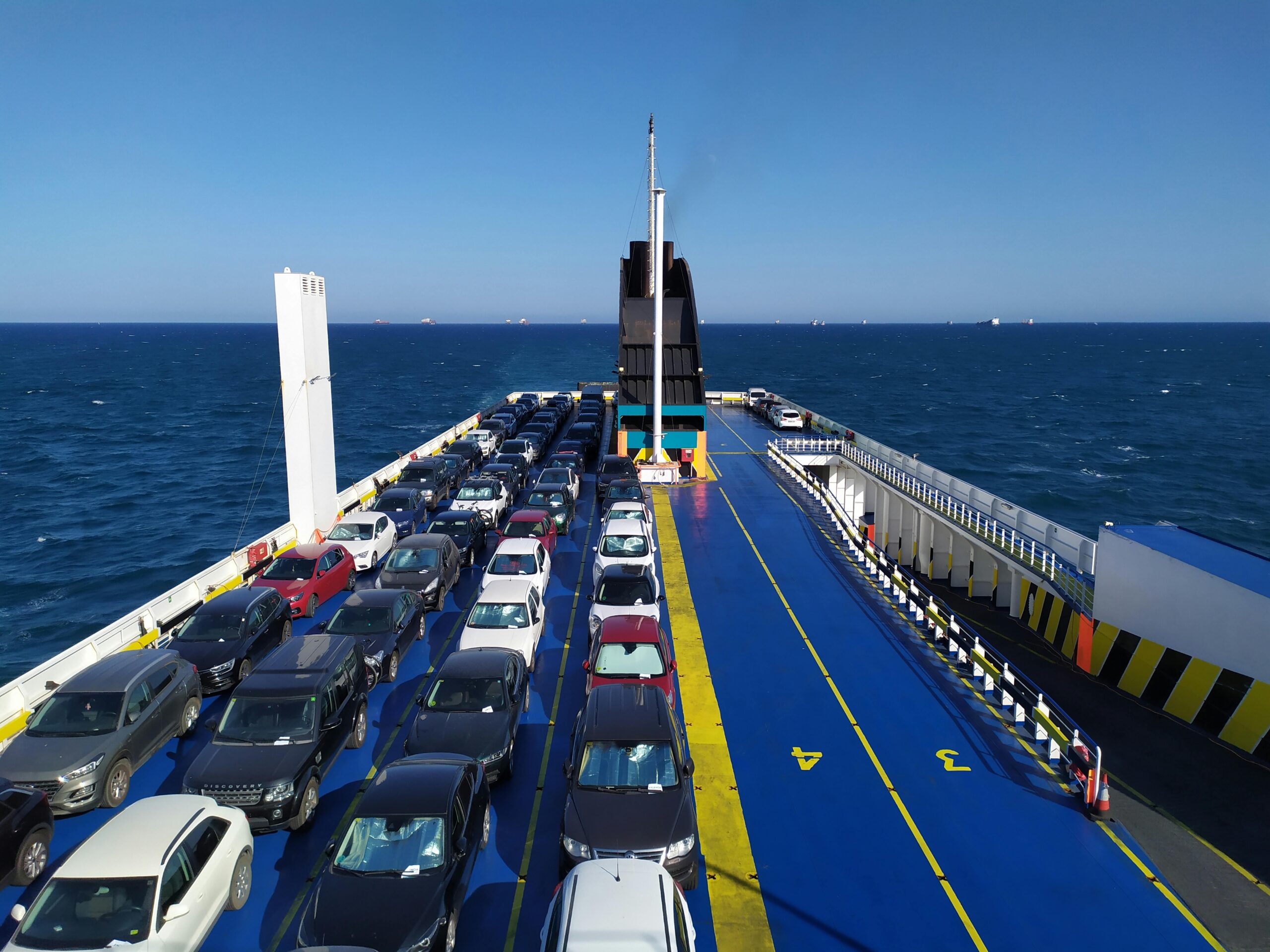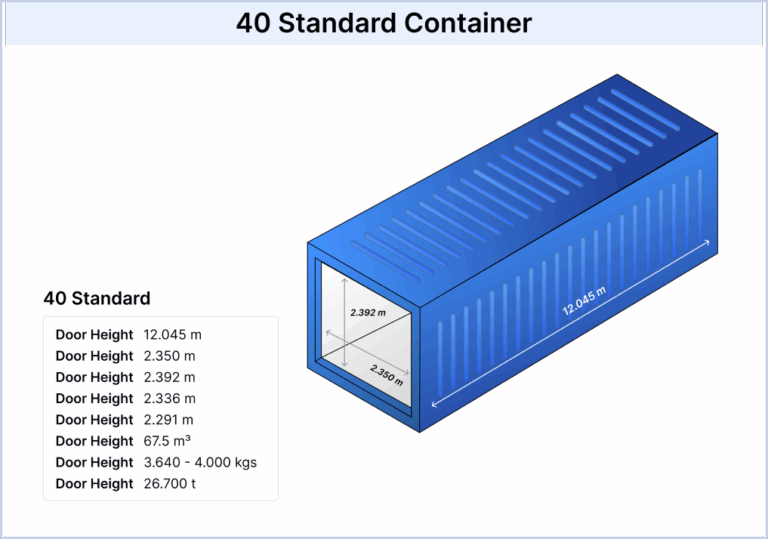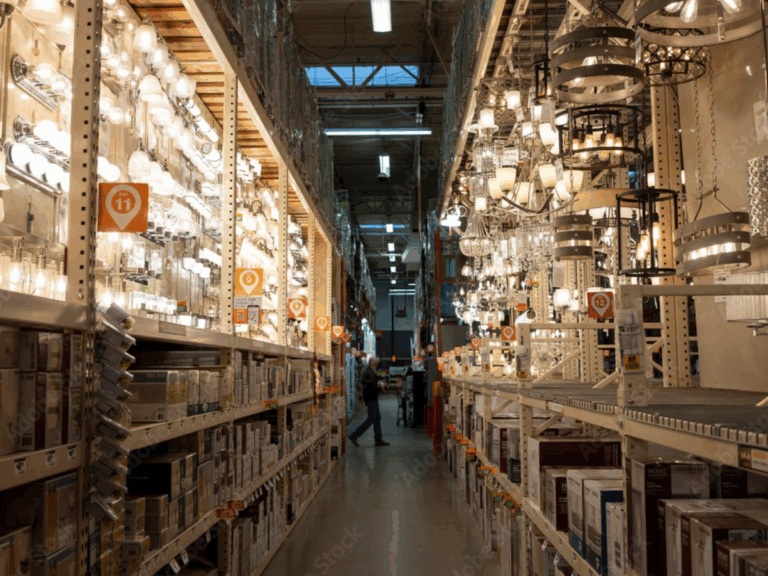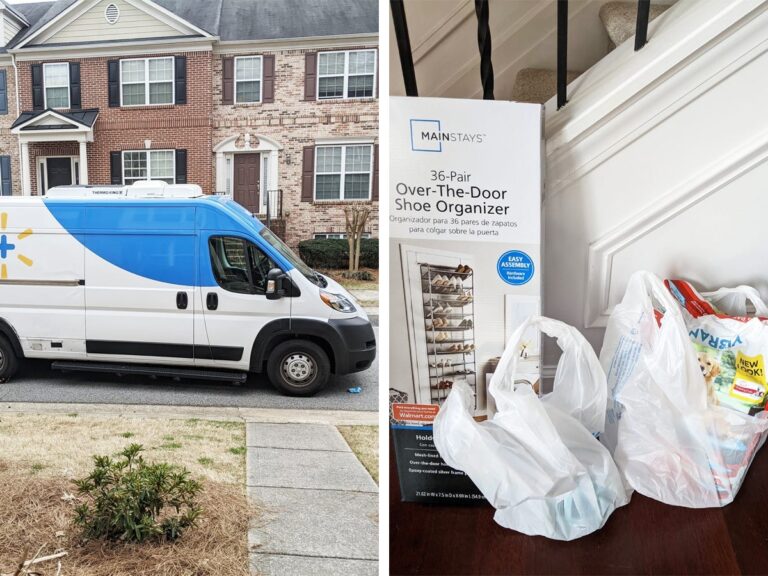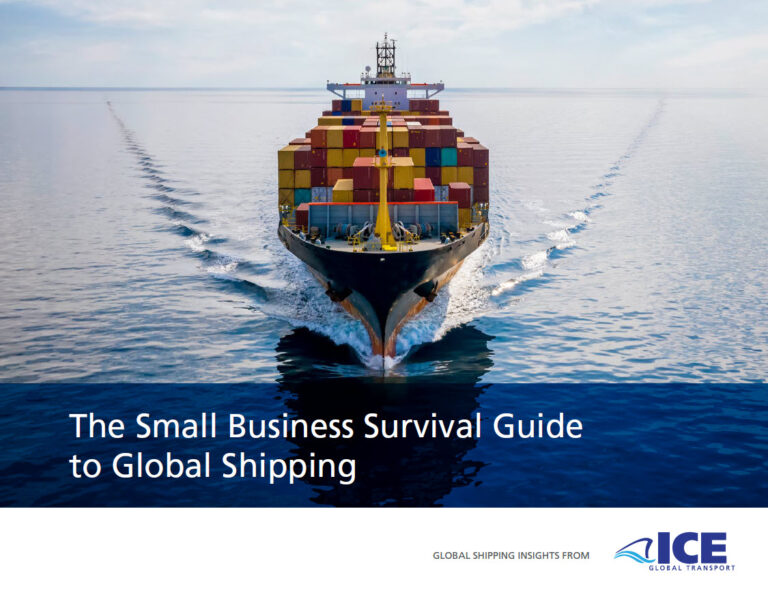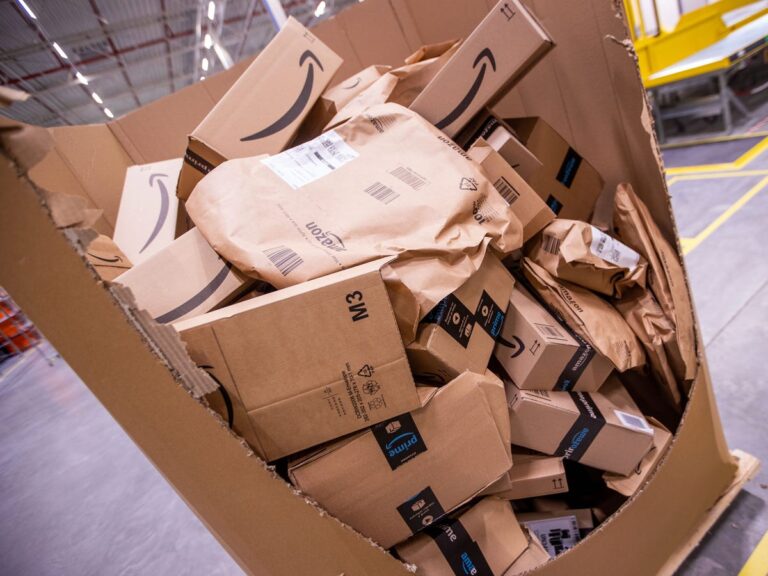Car Delivery From Factory To Dealership: The Ultimate Guide (2025)
Your Complete Guide to car delivery from factory to dealership
Navigating the Complexities of Car Delivery
In the competitive landscape of the automotive industry, one of the most significant challenges businesses face is the efficient delivery of vehicles from factories to dealerships. With a multitude of factors influencing the logistics process, including shipping methods, costs, transit times, customs regulations, and potential risks, understanding how to streamline this operation is crucial for success. For dealerships and importers alike, the stakes are high; delays can lead to inventory shortages, dissatisfied customers, and ultimately, lost revenue.
The logistics of car delivery involve a complex interplay of various shipping methods. From rail transport and ocean freight to truck deliveries, each option presents its own set of advantages and challenges. For instance, while ocean freight is often the most cost-effective for international shipments, it can be subject to longer transit times and customs delays. Conversely, truck transport offers faster delivery but can be more expensive, particularly over long distances. This guide will delve into these shipping methods, helping you choose the best fit for your specific needs.
Cost management is another critical area we will explore. Understanding the various fees associated with car transportation—ranging from shipping costs to insurance and customs duties—can empower you to make informed decisions that enhance your bottom line. We will break down these costs, providing clarity on what to expect at each stage of the delivery process.
Transit times are equally important, as they directly affect your ability to meet customer demands. We will provide insights into typical transit times for various shipping methods, along with tips on how to minimize delays, ensuring that your vehicles arrive on schedule and in pristine condition.
Customs regulations can often be a roadblock in international car delivery. We will guide you through the essential documentation and compliance requirements that are necessary for smooth customs clearance, allowing you to avoid unnecessary complications.
Lastly, we will address the risks involved in car transportation, including potential damages during transit and how to mitigate these risks through proper insurance and handling practices.

By the end of this guide, you will gain the expert knowledge necessary to navigate the complexities of car delivery from factory to dealership efficiently. Whether you are a seasoned importer, exporter, or a business owner looking to enhance your logistics strategy, this comprehensive resource will equip you with the tools to optimize your vehicle delivery process, ensuring timely and safe arrivals every time.
Table of Contents
- Your Complete Guide to car delivery from factory to dealership
- Understanding Your Shipping Options: A Detailed Comparison
- Deconstructing the Cost: A Full Pricing Breakdown
- Transit Time Analysis: How Long Will It Take?
- Navigating Customs Clearance: A Step-by-Step Guide
- A Practical Guide to Choosing Your Freight Forwarder
- Incoterms 2020 Explained for Shippers
- Risk Management: Identifying and Mitigating Common Shipping Problems
- Frequently Asked Questions (FAQs) for car delivery from factory to dealership
- Conclusion: Key Takeaways for Successful Shipping
- Important Disclaimer
Understanding Your Shipping Options: A Detailed Comparison
Introduction to Transportation Methods for Car Delivery
When it comes to delivering vehicles from factories to dealerships, shippers have several transportation options to choose from. Each method comes with its unique advantages and challenges, making it crucial for businesses to understand their shipping options. This guide provides a comprehensive comparison of different transportation methods, highlighting their suitability for various needs, speed, cost implications, and other key factors.
Overview Comparison Table
| Shipping Method | Best For | Speed | Cost Level | Key Advantages | Key Disadvantages |
|---|---|---|---|---|---|
| Sea FCL | Large shipments, bulk cars | Moderate | Low to Medium | Cost-effective for bulk; large capacity | Longer transit times; port handling delays |
| Sea LCL | Smaller shipments | Moderate | Medium to High | Flexibility for smaller loads; lower cost | Higher cost per unit; potential delays |
| Air | Urgent deliveries | Very Fast | High | Quick delivery; minimal handling | Very high cost; limited cargo capacity |
| Rail | Intercontinental shipping | Moderate | Medium | Reliable for long distances; lower emissions | Limited accessibility; longer transit times |
| Express | Time-sensitive deliveries | Fast | High | Guaranteed delivery times; tracking services | High cost; limited to smaller shipments |
Detailed Breakdown of Each Method
Sea Freight (FCL and LCL)
What It Is:
Sea freight involves transporting vehicles via cargo ships. Full Container Load (FCL) means the shipper books an entire container, while Less than Container Load (LCL) allows sharing a container with other shipments.
When to Use It:
Use sea freight when shipping large volumes of vehicles or when budget constraints are a priority. FCL is ideal for bulk shipments, while LCL is suitable for smaller loads.
Pros:
– Cost-Effective: Particularly for large shipments, FCL can significantly reduce per-unit costs.
– Capacity: Ships can carry thousands of vehicles simultaneously, making it a good option for manufacturers.
Cons:
– Long Transit Times: Sea freight generally takes longer compared to air freight.
– Port Handling: Risks of delays at ports due to customs or handling issues.
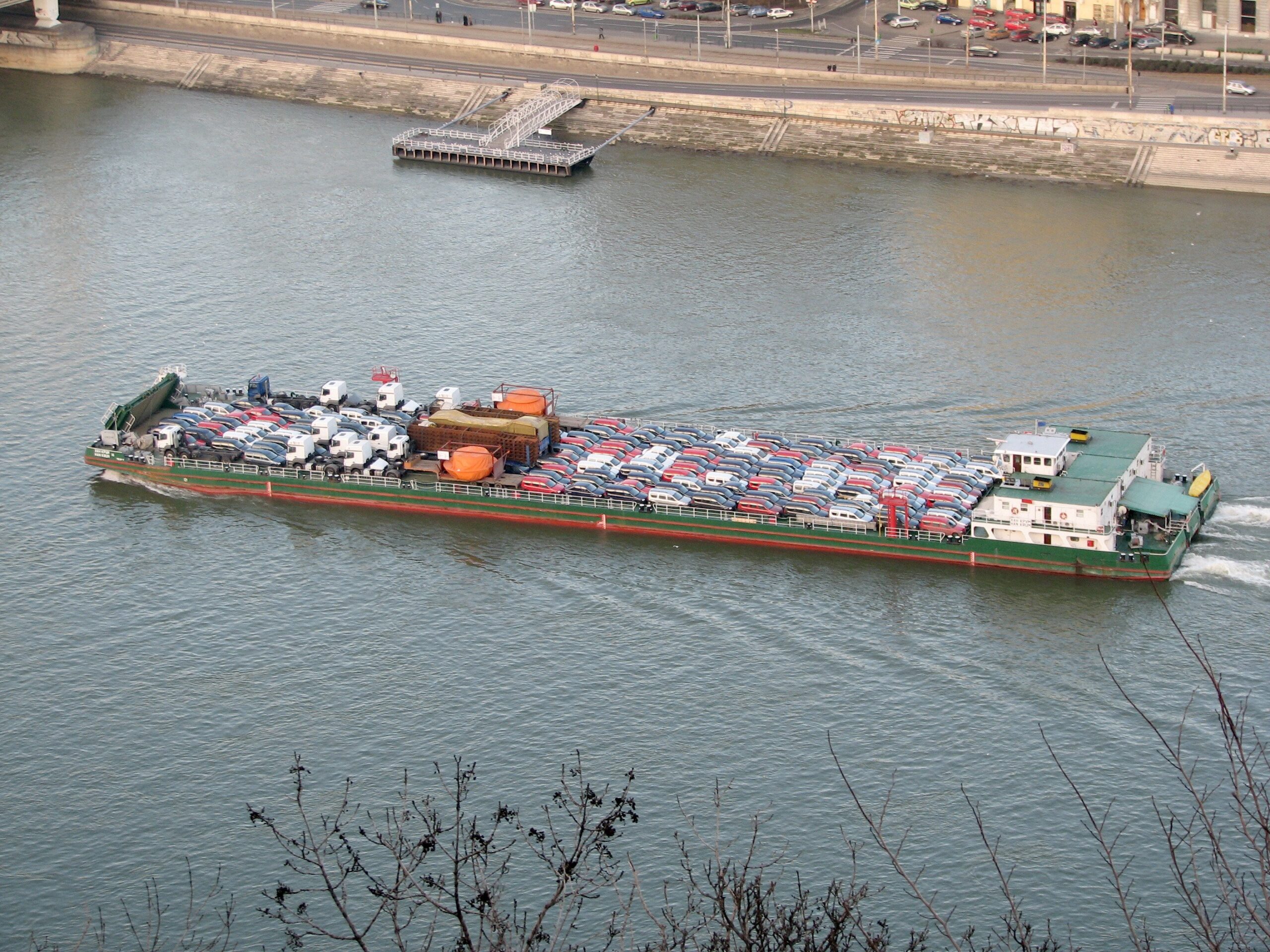
Air Freight
What It Is:
Air freight involves transporting vehicles via cargo planes, typically for urgent deliveries.
When to Use It:
Air freight is best for time-sensitive shipments where speed is paramount.
Pros:
– Speed: The fastest shipping method available, often completing shipments in days.
– Minimal Handling: Reduces the risk of damage during transport due to limited handling.
Cons:
– Cost: Significantly more expensive than other methods, making it less viable for large shipments.
– Capacity Limits: Limited space on planes restricts the number of vehicles that can be transported.
Rail Transport
What It Is:
Rail transport involves shipping vehicles via freight trains, often used for cross-country deliveries.
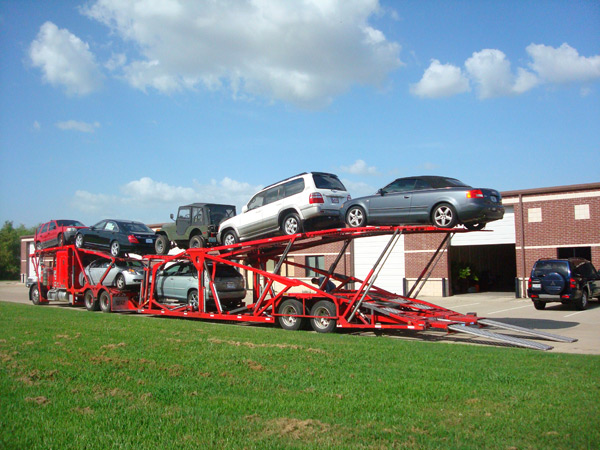
When to Use It:
This method is suitable for intercontinental shipments, especially in regions with established rail networks.
Pros:
– Reliability: Trains generally have set schedules, reducing the risk of delays.
– Eco-Friendly: Lower carbon emissions compared to truck transport.
Cons:
– Accessibility: Not all locations have direct rail access, necessitating additional transportation modes.
– Longer Transit: While reliable, rail transport can take longer than road or air transport.
Express Services
What It Is:
Express services are specialized carriers that prioritize quick delivery, often using a combination of air and ground transport.
When to Use It:
Ideal for urgent deliveries requiring guaranteed arrival times.
Pros:
– Guaranteed Delivery: Reliable tracking and scheduling ensure timely arrivals.
– Convenience: Often includes door-to-door service.
Cons:
– High Costs: More expensive than standard shipping options.
– Limited Capacity: Best suited for smaller shipments due to capacity restrictions.

Special Considerations
Multimodal Transport
Multimodal transport combines multiple shipping methods to optimize delivery. For instance, a vehicle might be transported via sea freight to a port, then moved by rail or truck to the dealership. This approach can enhance efficiency and reduce costs but requires careful planning and coordination.
Specialized Options
-
Roll-on/Roll-off (RoRo): This method allows vehicles to be driven onto a specialized ship designed for car transport. RoRo is often the preferred choice for shipping large numbers of vehicles, as it simplifies loading and unloading processes.
-
Break Bulk Shipping: For oversized or uniquely shaped vehicles, break bulk shipping involves securing each vehicle separately rather than in containers. This method can be more labor-intensive and costly but is necessary for certain types of cargo.
Conclusion
Choosing the right shipping method for car delivery from factory to dealership is crucial for ensuring timely, cost-effective, and safe transportation. By understanding the strengths and weaknesses of each option, businesses can make informed decisions that align with their operational needs and budget constraints. Whether opting for sea freight, air transport, or a multimodal approach, the key lies in selecting the method that best meets specific logistical requirements while minimizing risks and maximizing efficiency.
Deconstructing the Cost: A Full Pricing Breakdown
Main Cost Components
When it comes to delivering cars from factories to dealerships, understanding the various cost components involved is crucial for international shippers, importers, and exporters. The primary categories include Main Freight, Origin Charges, and Destination Charges. Each of these components plays a vital role in determining the overall cost of vehicle transportation.
Main Freight
Main Freight represents the bulk of transportation costs. This is the charge for moving vehicles from one location to another, either by sea, air, or land. The method of transportation significantly influences this cost:
- Sea Freight: Generally the most cost-effective for large shipments. Costs are calculated based on container size (20ft, 40ft) or Less than Container Load (LCL).
- Air Freight: Much faster but typically more expensive, charged per kilogram. Suitable for urgent shipments.
- Land Transport: Costs vary based on distance and the type of transport (open or enclosed trailers).
Factors influencing Main Freight costs include:
- Distance: Longer distances naturally incur higher costs.
- Volume and Weight: Heavier and bulkier shipments lead to increased rates.
- Shipping Season: Peak seasons (e.g., holidays, summer) may increase rates due to higher demand.
Origin Charges
Origin Charges are fees incurred at the point of departure. These costs can include:
- Loading Fees: Charges for loading vehicles onto the transport vehicle or vessel.
- Documentation Fees: Costs associated with preparing necessary shipping documents (e.g., bills of lading).
- Customs Clearance: Fees for clearing vehicles through customs in the exporting country.
- Handling Charges: Fees for the physical handling of the vehicles at the origin facility.
The following factors can influence Origin Charges:
- Local Regulations: Each country has different customs and handling regulations that can affect costs.
- Type of Vehicle: Luxury or specialized vehicles may incur additional handling charges.
- Time Sensitivity: Expedited services usually come with higher fees.
Destination Charges
Destination Charges are incurred once the shipment arrives at its destination. These costs can include:
- Unloading Fees: Charges for removing vehicles from the transport vehicle or vessel.
- Delivery Fees: Costs for transporting the vehicle from the port or terminal to the dealership.
- Customs Duties and Taxes: Import taxes and duties required by the destination country.
- Storage Fees: If vehicles are held at the port or terminal for an extended period before pickup.
Factors that can influence Destination Charges include:
- Port or Terminal Fees: Different ports have varying charges based on infrastructure and services.
- Regulatory Compliance: Costs associated with meeting local compliance and safety standards.
- Storage Duration: Longer storage times can lead to increased fees.
Example Pricing Table
The following table provides an estimated pricing breakdown for car delivery via sea and air freight from China to the USA. Please note that these are estimates and actual prices may vary based on several factors.
| Shipping Method | Container Size / Weight | Estimated Cost (USD) |
|---|---|---|
| Sea Freight | 20ft Container | $1,500 – $2,500 |
| Sea Freight | 40ft Container | $2,500 – $4,000 |
| Sea Freight | LCL (per cubic meter) | $200 – $400 |
| Air Freight | Per kg | $5 – $10 |
Disclaimer: The above prices are estimates and can vary widely based on factors such as shipping routes, fuel costs, and market demand. Always consult with a logistics provider for precise quotes.
How to Reduce Costs
Reducing transportation costs is essential for maximizing profitability in the automotive supply chain. Here are some actionable tips for businesses:
-
Negotiate Rates: Build relationships with freight forwarders and negotiate better rates based on volume or loyalty.
-
Consolidate Shipments: Combine shipments whenever possible to take advantage of bulk rates, especially when using sea freight.
-
Optimize Routes: Work with logistics providers to find the most efficient shipping routes that reduce transit times and costs.
-
Consider Alternative Transport Modes: Evaluate the cost-effectiveness of different modes of transport; sometimes, a combination of sea and land transport can save money.
-
Plan Ahead: Avoid last-minute shipping requests that can incur premium charges. Plan shipments well in advance to secure lower rates.
-
Stay Informed on Market Trends: Keep an eye on fuel prices and market demand to anticipate cost fluctuations and adjust shipping strategies accordingly.
-
Utilize Technology: Implement logistics management software for real-time tracking and better coordination, which can lead to cost reductions through improved efficiency.
By understanding the cost components and employing strategic practices, businesses can effectively manage their vehicle transportation expenses, ensuring smoother operations and improved profit margins in the automotive industry.
Transit Time Analysis: How Long Will It Take?
Understanding Transit Times for Car Delivery
When planning the delivery of cars from factories to dealerships, understanding transit times is crucial for managing logistics effectively. Various factors influence these times, including the mode of transportation, geographical routes, port congestion, customs clearance, and even weather conditions. Each of these variables can significantly impact how long it takes for vehicles to reach their final destinations.
Factors Influencing Transit Time
-
Shipping Mode: The choice of shipping mode—whether by sea, air, or land—plays a pivotal role in determining transit times. Sea freight, while generally more economical, can take several weeks due to the extended travel distances and potential delays at ports. In contrast, air freight is much faster, typically taking just a few days, but comes at a higher cost.
-
Port Congestion: Congestion at ports is a common issue that can lead to delays. When multiple ships arrive simultaneously, the processing times for unloading and customs clearance can increase, leading to longer wait times for vehicles. This is particularly relevant in major ports like Los Angeles or Hamburg, where high volumes of cargo traffic can create bottlenecks.
-
Customs Clearance: Customs procedures can also affect transit times, especially for international shipments. Each country has its own regulations and processing times for imported vehicles. Delays in documentation or inspections can result in longer wait times before the vehicles are released for further transport.
-
Routes: The specific route taken can impact transit time. Shorter or more direct routes may reduce delivery times, while detours due to road construction or other logistical challenges can lead to delays. Additionally, the distance between the factory and dealership will inherently affect the overall transit time.
-
Weather Conditions: Weather can be unpredictable and may cause delays in transportation. Adverse weather conditions such as heavy rain, snow, or storms can disrupt road and sea transport, leading to longer delivery times. It’s essential for businesses to account for potential weather-related disruptions when planning shipments.
Estimated Transit Time Table
Below is a table outlining estimated transit times for car delivery from various origins to destinations, specifically highlighting the differences between sea and air freight.
| Origin | Destination | Sea Freight (Days) | Air Freight (Days) |
|---|---|---|---|
| China | USA | 25-40 | 5-7 |
| Germany | UAE | 20-30 | 4-6 |
| Brazil | USA | 15-25 | 3-5 |
| Japan | Germany | 30-45 | 6-8 |
| South Korea | UAE | 25-35 | 5-7 |
Context and Explanation
The transit times provided in the table are estimates based on port-to-port shipping. For instance, the delivery of vehicles from China to the USA via sea freight typically takes between 25 to 40 days, considering factors such as port congestion and customs clearance. Air freight significantly reduces this time to just 5 to 7 days but at a higher cost.
It is important for businesses to plan for potential delays beyond these estimates. Factors such as customs inspections, documentation issues, or unexpected weather conditions can add additional time to the delivery process. Therefore, businesses should factor in a buffer period when scheduling deliveries to ensure that vehicles arrive on time for dealership readiness.
By understanding these variables and preparing for potential delays, dealerships can better manage their inventory and maintain customer satisfaction, ultimately leading to smoother operations and enhanced profitability.
Navigating Customs Clearance: A Step-by-Step Guide
The Process Explained
Navigating customs clearance for car delivery from factory to dealership involves several critical steps. This process ensures that vehicles are legally imported, duties are paid, and compliance with regulations is maintained. Here’s a streamlined workflow:
-
Pre-Shipping Preparation:
Before the vehicle is shipped, importers must gather all necessary documentation and ensure compliance with local regulations. This includes verifying that the vehicle meets emission and safety standards required by the destination country. -
Engage a Customs Broker:
Hiring a licensed customs broker is highly recommended. These professionals have expertise in customs regulations and can facilitate the clearance process, ensuring all paperwork is accurately completed and submitted. -
Submit Required Documentation:
The customs broker will prepare and submit the required documents to the customs authorities. This step is crucial for initiating the clearance process. -
Customs Inspection:
Once the documents are submitted, customs may conduct an inspection of the vehicle. This can include checking the VIN (Vehicle Identification Number), confirming compliance with safety regulations, and verifying that the vehicle matches the documentation provided. -
Duties and Taxes Assessment:
Customs will assess duties and taxes based on the vehicle’s value and classification under the Harmonized System (HS) codes. The broker will notify you of the amounts due. -
Payment of Duties and Taxes:
After assessment, the importer must pay the calculated duties and taxes to the customs authority. This step must be completed before the vehicle can be released. -
Release and Delivery:
Upon successful completion of the above steps, customs will issue a release order. The vehicle can then be transported to the dealership, completing the delivery process.
Essential Documentation
Proper documentation is crucial for a smooth customs clearance process. Here are the essential documents required:
-
Commercial Invoice: This document details the transaction between the seller and the buyer, including the vehicle’s description, value, and terms of sale. It serves as proof of purchase and is necessary for calculating duties.
-
Packing List: This is a detailed list of the contents of the shipment, including the vehicle’s specifications. It helps customs officials verify what is being imported.
-
Bill of Lading (BOL): This legal document is issued by the carrier and serves as a receipt of goods. It outlines the terms of transportation and is necessary for claiming the vehicle upon arrival.
-
Import Declaration: This form provides customs with information about the vehicle, its value, and its intended use in the destination country.
-
HS Code Documentation: Accurate HS codes are essential for determining the applicable duties and taxes. These codes classify the vehicle based on its type and specifications.
Duties, Taxes, and HS Codes
Understanding duties, taxes, and HS codes is vital for the customs clearance process:
-
HS Codes: The Harmonized System (HS) code is an international standardized system for classifying goods. Each vehicle type has a specific HS code that determines its tariff classification. Importers must ensure they use the correct code to avoid delays and penalties.
-
Duties and Taxes Calculation: Duties are usually calculated as a percentage of the vehicle’s customs value, which includes the purchase price, shipping costs, and insurance. Different countries have varying duty rates based on HS codes, so it’s essential to consult with your customs broker to understand the specific rates applicable to your vehicle.
Common Problems & Solutions
Navigating customs clearance can present challenges. Here are common issues and practical solutions to avoid them:
- Incomplete Documentation:
- Problem: Missing or incorrect documents can lead to delays or penalties.
-
Solution: Double-check all documentation before submission. Work closely with your customs broker to ensure all forms are complete and accurate.
-
Incorrect HS Code Classification:
- Problem: Using an incorrect HS code can result in miscalculated duties and potential fines.
-
Solution: Conduct thorough research or consult with your customs broker to confirm the correct HS code for your vehicle.
-
Failure to Comply with Local Regulations:
- Problem: Vehicles that do not meet local safety and emission standards may be rejected by customs.
-
Solution: Familiarize yourself with the destination country’s regulations regarding vehicle imports. Ensure that the vehicle complies before shipping.
-
Payment Delays:
- Problem: Delays in payment of duties and taxes can hold up the clearance process.
-
Solution: Prepare for payment ahead of time. Ensure you have the necessary funds available and understand the payment methods accepted by customs.
-
Customs Inspections:
- Problem: Random inspections can delay the release of vehicles.
- Solution: Ensure that your vehicle is clean and in good condition, as a thorough inspection may be triggered by visible issues. Having all documentation in order can also speed up the inspection process.
Conclusion
Navigating customs clearance for car delivery from factory to dealership can be complex, but with proper planning and understanding of the process, it can be streamlined effectively. Engaging a customs broker, ensuring accurate documentation, and familiarizing yourself with duties and regulations are key steps to ensure a successful importation of vehicles. By being proactive and prepared, businesses can mitigate common issues, ensuring timely and efficient delivery of vehicles to dealerships.
A Practical Guide to Choosing Your Freight Forwarder
Understanding the Importance of a Freight Forwarder in Car Delivery
When it comes to transporting vehicles from factories to dealerships, selecting the right freight forwarder is crucial for ensuring timely, safe, and efficient delivery. A proficient freight forwarder will not only facilitate the logistics of car transportation but also enhance your dealership’s operational efficiency and customer satisfaction. This guide aims to provide practical steps for choosing a freight forwarder tailored to your specific needs in the automotive industry.
Key Qualities to Look For
-
Experience and Expertise
A freight forwarder with extensive experience in car transportation understands the intricacies involved in the logistics of the automotive industry. They should have a proven track record of handling vehicle shipments, particularly in your geographical area or specific markets (such as Germany, UAE, or Brazil). -
Robust Network
A strong network of relationships with carriers, ports, and local authorities is essential for efficient vehicle transportation. A freight forwarder with established connections can help you navigate customs regulations and potential delays, ensuring a smoother delivery process. -
Proper Licensing and Compliance
Ensure that the freight forwarder is licensed and complies with international and local regulations. This includes having the necessary permits for transporting vehicles across borders, as well as appropriate insurance coverage to protect your assets during transit. -
Effective Communication
Clear and timely communication is key to successful logistics management. Your freight forwarder should provide regular updates about shipment status, potential delays, and any issues that may arise. Look for a partner that prioritizes transparency and accessibility. -
Customizable Solutions
Different dealerships may have varying needs based on their inventory and logistics capabilities. Choose a freight forwarder that offers tailored solutions, such as door-to-door delivery, real-time tracking, and flexible scheduling options.
Sourcing Checklist
To streamline your selection process, consider the following action steps:
-
Define Your Needs
Assess your specific requirements for car transportation, including the types of vehicles you need to ship, the volume of shipments, and the desired delivery timelines. This will help you identify which freight forwarders are best suited for your operations. -
Research Potential Freight Forwarders
Conduct thorough research to compile a list of potential freight forwarders. Utilize online resources, industry forums, and referrals from other dealerships to identify reputable options. -
Request Quotes
Reach out to your shortlisted freight forwarders to request quotes. Be sure to provide them with detailed information about your needs so they can give you accurate estimates. Compare these quotes not only on price but also on the services offered. -
Ask Questions
Don’t hesitate to ask questions about their processes, experience with car transportation, and the technology they use for tracking shipments. Inquire about their approach to handling potential issues or delays. -
Check References
Request references from previous clients, particularly those in the automotive sector. Speaking with other dealerships about their experiences can provide valuable insights into the freight forwarder’s reliability and service quality.
Red Flags to Watch For
While evaluating potential freight forwarders, be vigilant for the following warning signs:
-
Lack of Transparency
If a freight forwarder is unwilling to provide clear information about their services, pricing structure, or insurance coverage, consider it a red flag. -
Poor Communication
Difficulty in reaching the forwarder or receiving timely responses can indicate potential issues in customer service and operational efficiency. -
Negative Reviews
Research online reviews and testimonials. Consistently negative feedback regarding delays, damage to vehicles, or customer service should raise concerns about their reliability. -
Unlicensed or Uninsured
Ensure that the freight forwarder possesses the necessary licenses and insurance. Working with an unlicensed provider can expose your dealership to significant risks. -
Rigid Terms and Conditions
A lack of flexibility in their services or unwillingness to accommodate your specific needs can indicate a lack of customer focus.
Conclusion
Choosing the right freight forwarder for car delivery from factory to dealership is a critical decision that can significantly impact your dealership’s efficiency and reputation. By focusing on the key qualities outlined in this guide, following the sourcing checklist, and being aware of potential red flags, you can make an informed choice that supports your business growth and operational success. With the right partner, you can streamline your logistics, enhance customer satisfaction, and keep your inventory moving smoothly.
Incoterms 2020 Explained for Shippers
Understanding Incoterms
Incoterms, short for International Commercial Terms, are a set of predefined rules published by the International Chamber of Commerce (ICC) that clarify the responsibilities of buyers and sellers involved in international trade. These terms define who is responsible for transportation, insurance, customs duties, and the transfer of risk during the shipping process. For businesses engaged in car delivery from factories to dealerships, understanding these terms is crucial for ensuring smooth logistics and mitigating risks associated with international shipping.
Key Incoterms Table
| Incoterm | Who Pays for Transport? | Where Risk Transfers? | Best for |
|---|---|---|---|
| EXW (Ex Works) | Buyer | At the seller’s premises | Buyers who want full control over transport |
| FOB (Free on Board) | Seller | Once the goods are on board the ship | Buyers looking for control over sea freight |
| CIF (Cost, Insurance, and Freight) | Seller | Upon arrival at the destination port | Buyers wanting a hassle-free experience |
| DDP (Delivered Duty Paid) | Seller | At the buyer’s premises | Buyers who prefer a fully managed shipping process |
Detailed Explanation of Incoterms
EXW (Ex Works)
Under the EXW term, the seller makes the vehicle available at their premises or another named place, such as a factory or warehouse. The buyer assumes all responsibility and costs from that point onward, including loading, transportation, and customs clearance. This arrangement is ideal for buyers who want complete control over the logistics process. For example, a dealership in Germany might choose EXW when purchasing vehicles from a factory in Brazil, allowing them to select a preferred shipping company and route.
FOB (Free on Board)
FOB terms indicate that the seller is responsible for all costs and risks until the vehicle is loaded onto the shipping vessel at the port of shipment. Once the vehicle is on board, the risk transfers to the buyer, who then assumes responsibility for transportation and insurance from that point. This term is commonly used when shipping cars overseas. For instance, if a dealership in the UAE imports cars from Germany, they may prefer FOB to manage costs associated with ocean freight while ensuring the vehicles are loaded securely.
CIF (Cost, Insurance, and Freight)
CIF takes the FOB concept further by requiring the seller to cover costs, insurance, and freight until the goods reach the destination port. This term provides buyers with a layer of security, as the seller is responsible for ensuring that the vehicle is insured during transit. This arrangement is advantageous for dealerships looking for a more hands-off approach. For example, a Brazilian dealership importing cars from a factory in Germany may opt for CIF, knowing that the seller will cover the shipping and insurance until the cars arrive in Brazil.
DDP (Delivered Duty Paid)
With DDP, the seller assumes full responsibility for delivering the vehicle to the buyer’s premises, including all costs and risks associated with transportation, insurance, and customs duties. This term is the most comprehensive, making it the best option for buyers who want a seamless shipping experience without dealing with logistics. For instance, a dealership in Germany purchasing vehicles from a factory in the UAE might choose DDP, allowing them to receive the cars directly at their location without worrying about the complexities of import duties or transportation logistics.
Conclusion
Selecting the appropriate Incoterm is critical for shippers, importers, and exporters engaged in car delivery from factories to dealerships. Understanding the implications of each term can help businesses streamline their logistics processes, mitigate risks, and enhance overall operational efficiency. By leveraging the right Incoterms, dealerships can better navigate the complexities of international shipping and ensure timely delivery of vehicles to meet customer demands.
Risk Management: Identifying and Mitigating Common Shipping Problems
Introduction
In the intricate world of car delivery from factory to dealership, proactive risk management is essential for ensuring smooth operations and protecting valuable assets. The automotive supply chain is fraught with potential challenges, from cargo damage during transit to delays caused by customs regulations. By identifying and addressing these risks in advance, businesses can minimize disruptions, protect their reputation, and enhance customer satisfaction. This guide outlines common shipping problems and offers practical strategies for mitigating these risks effectively.
Risk Analysis Table
The following table summarizes potential risks associated with car delivery, their impact on operations, and recommended mitigation strategies.
| Potential Risk | Impact | Mitigation Strategy |
|---|---|---|
| Cargo Damage | Damage can lead to significant financial losses and customer dissatisfaction. | Utilize reputable auto transport companies with proper handling procedures and invest in high-quality packaging materials. Conduct pre- and post-shipment inspections to document vehicle condition. |
| Delays | Late deliveries can disrupt dealership operations and harm customer relationships. | Develop a detailed logistics plan that includes buffer time for unforeseen delays. Regularly communicate with transport providers for real-time updates and adjustments. |
| Customs Holds | Customs delays can lead to increased shipping times and potential fines. | Ensure all necessary documentation is complete and compliant with international shipping regulations. Work with customs brokers to facilitate smooth clearance processes. |
| Inaccurate Tracking | Lack of visibility can lead to uncertainty and operational inefficiencies. | Choose transport providers that offer real-time tracking systems. Implement a logistics management software to monitor shipments from factory to dealership. |
| Regulatory Changes | Changes in shipping regulations can result in compliance issues and delays. | Stay informed about local and international shipping regulations. Regularly train staff and collaborate with logistics experts to adapt to regulatory changes swiftly. |
| Fuel Price Fluctuations | Rising fuel costs can increase transportation expenses unexpectedly. | Negotiate fixed-rate contracts with carriers when possible. Consider diversifying transportation methods to mitigate the impact of fuel price volatility. |
Cargo Insurance Explained
Cargo insurance is a critical component of risk management in the automotive shipping industry. It provides financial protection against loss or damage to vehicles during transit. Understanding the types of coverage available and the specific protections offered can help businesses safeguard their investments.
What It Covers
Cargo insurance typically covers:
- Theft: Protection against vehicles being stolen during transit.
- Damage: Coverage for vehicles that sustain damage from accidents, natural disasters, or mishandling.
- Loss: Financial compensation for vehicles that are lost during shipping, whether due to misplacement or other unforeseen circumstances.
Types of Cargo Insurance
- All-Risk Coverage: This comprehensive policy covers a broad range of risks, including theft, damage, and loss, unless specifically excluded.
- Named Perils Coverage: This policy only covers specific risks explicitly listed in the agreement, such as fire or collision. It is generally less expensive but offers less protection.
- Contingent Cargo Insurance: This coverage protects against losses not covered by the primary carrier’s insurance. It is particularly useful for high-value shipments.
Why It’s Essential
Investing in cargo insurance is essential for several reasons:
- Financial Protection: In the event of loss or damage, cargo insurance can cover the costs of repairs or replacements, protecting the dealership’s financial interests.
- Peace of Mind: Knowing that vehicles are insured against potential risks allows businesses to focus on their core operations without the constant worry of unforeseen events.
- Enhanced Credibility: Having cargo insurance can enhance a dealership’s reputation by demonstrating a commitment to safeguarding assets and ensuring customer satisfaction.
Conclusion
Effective risk management in car delivery from factory to dealership is not just about avoiding pitfalls; it is about creating a resilient and efficient logistics framework that can adapt to challenges. By identifying potential risks, implementing strategic mitigation measures, and investing in cargo insurance, businesses can protect their assets, streamline operations, and ensure timely deliveries. This proactive approach not only enhances operational efficiency but also builds trust with customers, ultimately driving dealership growth and success in the competitive automotive market.
Frequently Asked Questions (FAQs) for car delivery from factory to dealership
1. What are the primary modes of transportation for delivering cars from the factory to dealerships?
The primary modes of transportation for car delivery include maritime shipping, rail transport, and truck transport. Vehicles often begin their journey on cargo ships designed to hold thousands of cars, then may be transferred to rail for cross-country transport, and finally delivered by truck to the dealership. Each mode offers unique advantages depending on distance, cost, and logistical needs.
2. How do I choose the best car shipping company for my dealership?
Choosing the best car shipping company involves evaluating their experience, reliability, service offerings, and customer reviews. Look for companies that provide real-time tracking, insurance coverage, and customizable shipping solutions. It’s also essential to assess their ability to handle both individual and bulk shipments while ensuring vehicles arrive in pristine condition.
3. What factors influence the cost of shipping a car from the factory to a dealership?
Several factors influence shipping costs, including distance, mode of transport (truck, rail, or maritime), the weight and size of the vehicle, and any additional services like expedited shipping or enclosed transport. Seasonal demand and fuel prices can also impact rates, so it’s advisable to get multiple quotes and understand the pricing structure.
4. What is the difference between a Bill of Lading (BOL) and an Air Waybill (AWB)?
A Bill of Lading (BOL) is a document used for shipping goods by land or sea, serving as a receipt for the cargo and a contract between the shipper and carrier. An Air Waybill (AWB) is specific to air freight and functions similarly but is used for air transport. Both documents are essential for tracking shipments and ensuring compliance with shipping regulations.
5. Are there any customs requirements when shipping cars internationally?
Yes, shipping cars internationally often involves customs clearance procedures, which may include providing a commercial invoice, proof of ownership, and compliance with import regulations of the destination country. Customs bonds may be required to ensure duties and taxes are paid, and it’s crucial to work with a knowledgeable logistics provider to navigate these requirements effectively.
6. How can I ensure that vehicles arrive at the dealership in excellent condition?
To ensure vehicles arrive in excellent condition, choose reputable auto transport companies that specialize in vehicle shipping. Opt for enclosed transport if possible, as it provides additional protection from weather and road debris. Additionally, thorough pre-shipment inspections and documentation of vehicle condition can help address any issues that arise during transit.
7. What is chargeable weight, and how does it affect shipping costs?
Chargeable weight is the greater of the actual weight or the dimensional weight of a shipment, which is calculated based on the size of the vehicle. In car shipping, chargeable weight affects pricing since carriers may charge based on the space a vehicle occupies rather than its actual weight. Understanding this can help dealerships estimate shipping costs accurately.
8. How long does it typically take to ship a car from the factory to a dealership?
Shipping time can vary widely based on distance and the mode of transport used. Domestic shipments may take anywhere from a few days to a couple of weeks, while international shipments could take several weeks to a few months, depending on customs clearance and transit times. It’s essential to factor in potential delays due to weather or logistical challenges.
9. What types of insurance coverage are available for vehicle transport?
Insurance coverage for vehicle transport typically includes liability coverage, which protects against damage to the vehicle during transit, and cargo insurance, which covers loss or damage due to theft or accidents. Dealerships should confirm the level of coverage provided by the shipping company and consider additional insurance if necessary for high-value vehicles.
10. Can I track my vehicle shipment, and how does that process work?
Most reputable car shipping companies offer real-time tracking capabilities that allow dealerships to monitor their vehicle shipments. This process typically involves an online portal or mobile app where you can enter shipment details to receive updates on location and estimated delivery times. This transparency is crucial for maintaining operational efficiency and customer satisfaction.
Conclusion: Key Takeaways for Successful Shipping
Essential Elements for Effective Car Delivery
Successfully transporting vehicles from the factory to the dealership involves careful planning, strategic partnerships, and a keen awareness of costs. Here are the key takeaways to ensure a smooth shipping process:
Comprehensive Planning
Before initiating the shipping process, dealerships should meticulously plan each step. This includes selecting optimal shipping methods—be it rail or road—and determining the best routes for timely delivery. Establishing a clear timeline and understanding the logistics involved, such as port handling and storage, can significantly reduce delays and unexpected challenges.
Strategic Partnerships
Choosing the right car shipping partners is crucial for any dealership. Collaborating with reputable auto transport companies not only enhances operational efficiency but also safeguards the vehicles during transit. Look for partners that offer customizable solutions, real-time tracking, and robust insurance coverage. These attributes can enhance reliability and customer satisfaction, making your dealership a trusted choice in the market.
Cost Management
Being aware of shipping costs is essential for maintaining profitability. Evaluate different transportation options and negotiate pricing with carriers to find a balance between cost-effectiveness and quality service. Investing in a reliable car transport service can save money in the long run by minimizing damages and delays, ultimately leading to improved customer experiences.
Moving Forward
In conclusion, the journey of car delivery from factory to dealership is a multifaceted process that requires attention to detail and strategic foresight. By focusing on thorough planning, fostering strong partnerships, and managing costs effectively, dealerships can streamline their operations and enhance their growth potential.
We encourage you to take the first step toward optimizing your vehicle shipping logistics today. Explore partnerships with trusted transport services, and ensure your dealership stands out in a competitive market. Your commitment to excellence in car delivery can drive success and satisfaction for both your business and your customers.
Important Disclaimer
⚠️ Important Disclaimer
The information in this guide is for educational purposes only and does not constitute professional logistics advice. Rates, times, and regulations change frequently. Always consult with a qualified freight forwarder for your specific needs.
